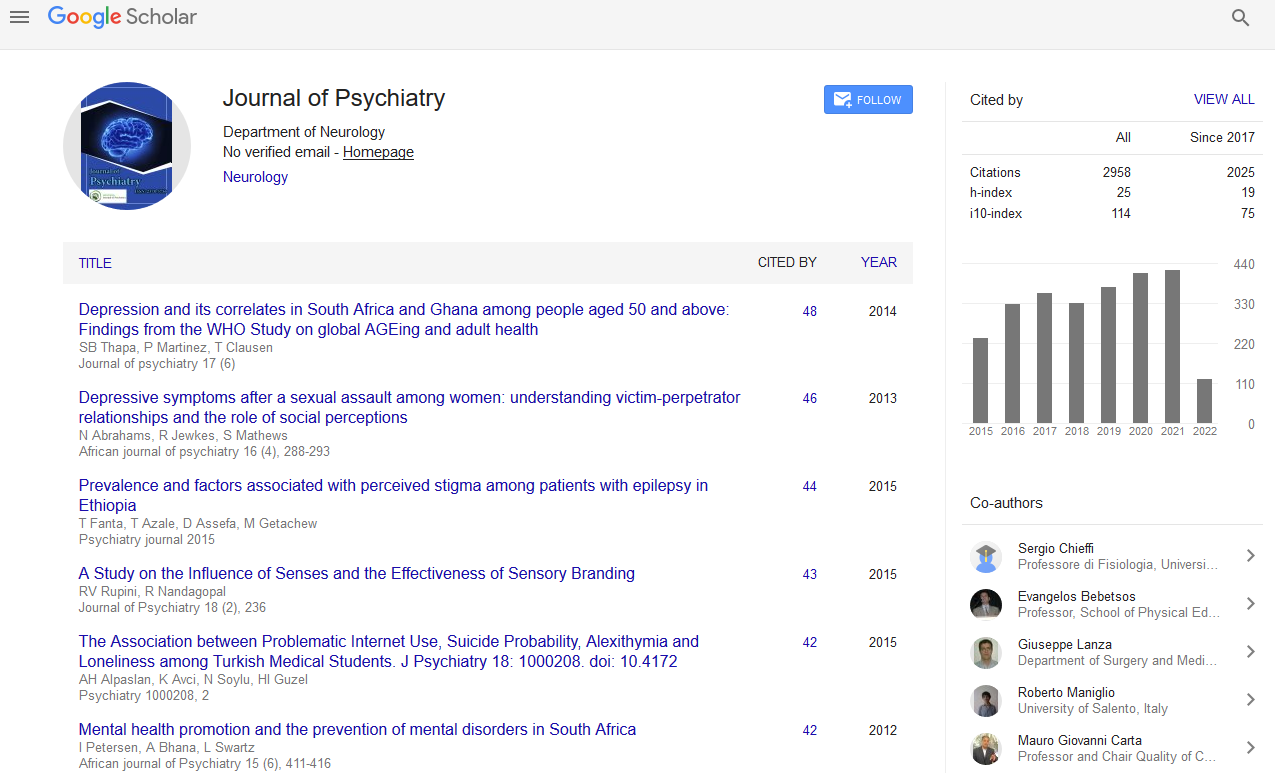PMC/PubMed Indexed Articles
Indexed In
- RefSeek
- Hamdard University
- EBSCO A-Z
- OCLC- WorldCat
- SWB online catalog
- Publons
- International committee of medical journals editors (ICMJE)
- Geneva Foundation for Medical Education and Research
Useful Links
Share This Page
Open Access Journals
- Agri and Aquaculture
- Biochemistry
- Bioinformatics & Systems Biology
- Business & Management
- Chemistry
- Clinical Sciences
- Engineering
- Food & Nutrition
- General Science
- Genetics & Molecular Biology
- Immunology & Microbiology
- Medical Sciences
- Neuroscience & Psychology
- Nursing & Health Care
- Pharmaceutical Sciences
The relevance of non-suicidal self-injury to suicide and suicide attempts in adolescents
4th Euro-Global Congress on Psychiatrists & Forensic Psychology
November 10-11, 2016 Alicante, Spain
Theodore A Petti
Rutgers-Robert Wood Johnson Medical School, USA
Keynote: J Psychiatry
Abstract:
Suicide is now the second leading cause of death in adolescents and young adults. Self-harm behaviors are frequently reported in this population. The lifetime prevalence is 12% to 16% for any suicidal ideation, 4% to 13% for suicidal ideation with a plan, and 4% to 8% for suicide attempts (SAs). Non-suicidal self injury (NSSI), self-harm with no intent to die is much more common in adolescents with reported lifetime prevalence from 12% to 23% and even higher in adolescent clinical populations. Distinctions between suicidal and non-suicidal self-harm have become clearer. Critical overlaps persist as both represent increased risk for completed suicide, with NSSI representing a greater risk factor than SAs for a deadly outcome. This presentation describes models of suicidal behavior and the role played by NSSI in the process of SAs and completed suicide. The role of self-harm from ideation to NSSI and/or SA is critical for case formulation and conceptualizing further assessment and therapeutic interventions. Numerous risk factors for SA and NSSI have been validated but there are no landmarks to acutely predict a SA for a given individual. The hopefulness that consciously or unconsciously accompanies NNSI is contrasted to the hopelessness of SA and completed suicide and expanded upon. Models are integrated to explain NSSI relevance in case formulation when suicidal behavior has a high potential to occur. The bio-psychosocial basis for self-harm and suicidal behavior is reviewed. Implications for placing NSSI in the context of SAs and their relevance for SAs and completed suicide are outlined.
Biography :
Theodore A Petti has completed his MD at Case-Western Reserve University, General Psychiatry training at the University of North Carolina at Chapel Hill, North Carolina, child and adolescent psychiatry training at Bellevue-New York University, and MPH at the University of Pittsburgh. He is Professor of Psychiatry and has had numerous leadership positions in academia and professional organizations. He has widely published with varied research interests that evolved around, assessment, diagnosis, treatment, and service delivery of the most severe pediatric psychiatric disorders, particularly depression in which he was among the earliest proponents of its existence in children, ADHD, coping styles, and language/communication disorders.
Email: pettita@ubhc.rutgers.edu


